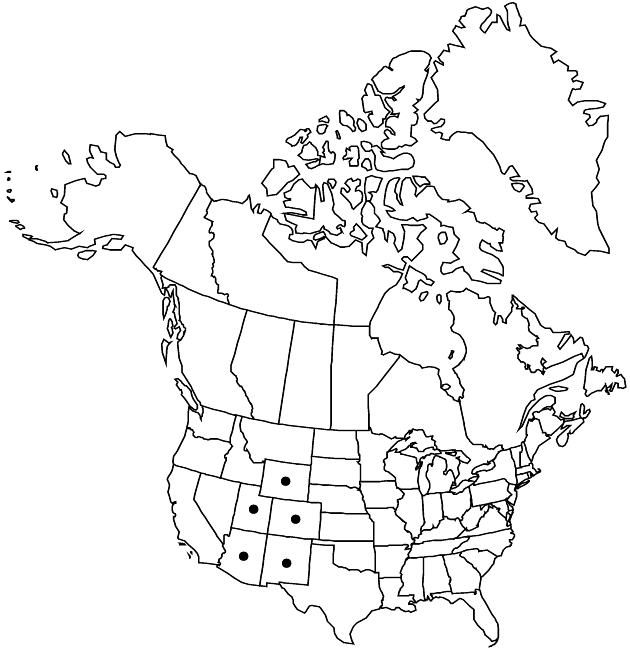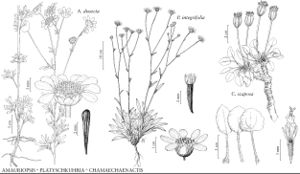Chamaechaenactis scaposa
Bull. Torrey Bot. Club 33: 156. 1906.
Plants densely cespitose, ± pulvinate; taproots deep; caudices thickly branched. Leaves strictly basal (old bases marcescent); longest petioles 3–40 mm, lengths mostly 1–2 times blades, proximally dilated and ± chartaceous; blades: largest 4–15(–18) × 3–13(–15) mm, coriaceous. Peduncles (1–)5–30+, ascending to erect, (0–)1–5(–7) cm, ± strigose, usually villous (at least distally). Phyllaries: longest 9–17 mm; outer shorter than inner. Corollas 5–9 mm. Cypselae 5–8 mm; pappi: longest scales 4–7 mm. 2n = 32.
Phenology: Flowering late Apr–early Jul.
Habitat: Dry, open, relatively barren silty to clay soils from shale (sometimes petroleum-bearing), sandstone, marl, or limestone, often armored by rocky, sandy, or gravelly overburden, usually in pinyon-juniper woodlands
Elevation: 1400–2600 m
Distribution

Ariz., Colo., N.Mex., Utah, Wyo.
Discussion
Chamaechaenactis scaposa is grown and sold for use in rock gardens; it is considered a difficult horticultural subject. It is native to the Green, San Juan, and upper Colorado river basins in eastern Utah and western Colorado, extending to northeastern Arizona, northwestern New Mexico, and southwestern Wyoming. A previous report of C. scaposa from Idaho was in error.
Plants of Chamaechaenactis scaposa to the east and south tend to have heads and flowers larger, and leaves larger, more frequently ovate-cordate and distally crenate (var. scaposa), than plants to the west and north (var. parva), which also tend to have narrower and uniformly entire leaves (S. J. Preece and B. L. Turner 1953). Some recent collections from higher-elevation limestone sites at the western edge of the range of the species are reduced to a degree not originally included in var. parva, with heads ± sessile, embedded among dense leaves with blades scarcely reaching 5 mm. The two varieties appear to represent points within a broad, intermingled, clinal pattern of variation; they do not merit formal taxonomic recognition.
Selected References
None.
